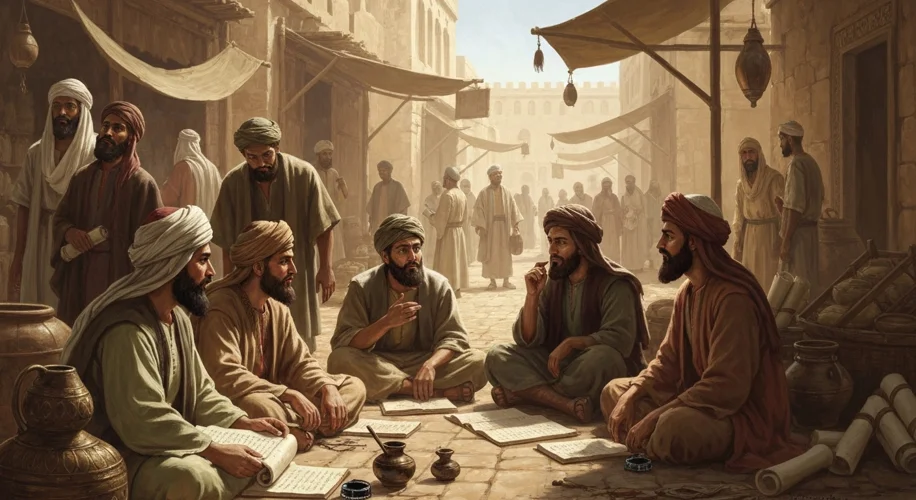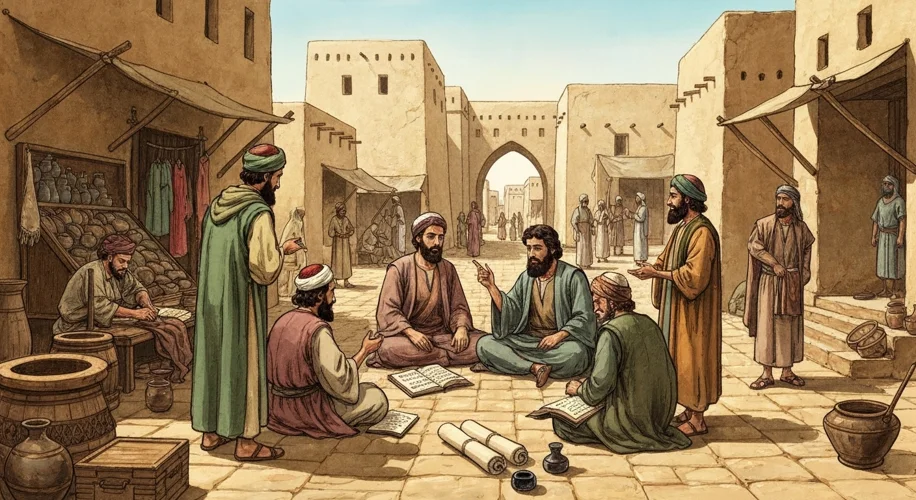In the hushed corners of early Islamic society, a profound and sometimes contentious debate was unfolding. It wasn’t about grand battles or shifting empires, but about something far more intimate: the preservation of words. Specifically, the words, actions, and approvals of the Prophet Muhammad, known as Hadith. These were the whispers that guided a nascent community, the practical interpretations of divine revelation. Yet, for a significant period, the deliberate act of writing them down was met with caution, even prohibition.
To understand this delicate dance between preservation and caution, we must step back into the 7th and 8th centuries CE. The Prophet Muhammad, who passed away in 632 CE, left behind a community deeply devoted to his teachings. The Quran was being compiled, but the Prophet’s Sunnah – his way of life – was primarily carried in the memories and oral traditions of his companions. These companions, the Sahaba, were the first custodians of this invaluable legacy.
Imagine a bustling marketplace in Medina, the early capital of Islam. Here, stories of the Prophet’s wisdom, his compassion, and his practical guidance were exchanged, debated, and passed from person to person. This oral transmission was powerful, imbued with the authority of those who had witnessed the events firsthand. However, it also carried inherent risks – the potential for misremembering, embellishment, or even deliberate distortion. Furthermore, there was a crucial concern: ensuring that the nascent tradition of Islam did not become confused with the Quran, the literal word of God. Early scholars, in their earnestness to protect the sanctity of the Quran, feared that widespread written Hadith might blur the lines between divine text and human recollection.
This caution manifested in early prohibitions against writing down Hadith. Some narrations suggest that the Prophet himself discouraged extensive writing, possibly to safeguard the Quran. Figures like Umar ibn al-Khattab, the second Caliph, are reported to have initially hesitated to compile Hadith, opting instead for oral transmission and focusing on the Quran. This wasn’t a rejection of the Prophet’s teachings, but a strategic decision to prioritize the foundational text. We see this tension reflected in hadith literature itself, with some reports encouraging memorization and oral narration, while others gradually indicated a shift towards written records as the community grew and the need for systematic preservation became more apparent.

Key figures like Abdullah ibn Amr ibn al-‘As, who meticulously documented the Prophet’s sayings in his collection known as the “Sahifa Hammam ibn Munabbih” (written around 650 CE), represent a crucial early effort to codify these traditions. Despite the prevailing caution, individuals like him recognized the imperative of recording these precious words for posterity. His work, though not widely circulated initially, stands as a testament to the early desire to preserve the Sunnah in written form. Later, under the Umayyad Caliphate, particularly during the reign of Caliph ‘Umar II (717-720 CE), a more systematic approach to collecting and compiling Hadith was officially initiated. This marked a turning point, with scholars like Ibn Shihab al-Zuhri being commissioned to gather the scattered narrations.
The process was far from simple. It involved arduous journeys, painstaking verification, and rigorous critique. Scholars would travel vast distances to meet individuals who might have heard a particular hadith, cross-referencing accounts, scrutinizing the chains of narrators (the isnad), and evaluating the reliability of each transmitter. This meticulous methodology, developed over centuries, was essential to building a corpus of Hadith that Muslims could trust. The development of ‘Ilm al-Rijal’ (the science of men), which involved biographies and critical evaluations of hadith narrators, became a cornerstone of this preservation effort.
The consequences of this early period were profound. While the initial hesitations highlight a genuine concern for textual purity, the eventual systematic compilation ensured the survival and widespread dissemination of the Prophet Muhammad’s teachings. This corpus of Hadith became a secondary, yet indispensable, source of Islamic law and guidance, complementing the Quran. It provided context, explained the practical application of rituals, and offered ethical and moral frameworks for daily life. Without this careful, albeit initially debated, preservation, much of the practical dimension of Islam as practiced by the Prophet would likely have been lost to the mists of time.
The story of Hadith transmission is a compelling example of how communities grapple with preserving their most sacred traditions. It illustrates the interplay between oral and written culture, the challenges of historical accuracy, and the enduring human desire to connect with foundational figures and their teachings across generations. The whispers of prophecy, once carried only on the wind, were ultimately secured, not just in memory, but in the enduring power of the written word.

